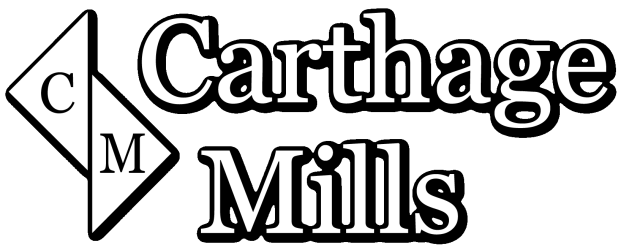Carthage %™ Open Area Series of Woven Monofilament Geotextiles

SERIES DESCRIPTION
Only woven monofilament geotextiles can provide long-term solutions for nearly any drainage / filtration application. This makes them the filter fabric of choice for bulkheads, subsurface drainage systems and also under hard armor.
Effective levels of Percent Open Area (POA), a property found critical to long-term filtration is unique to woven monofilaments. Values ≥4% indicate that a sufficient quantity of distinct, measurable, uniform and also unidirectional paths through the fabric exist. This allows for the release of troublesome migrating fines – the nemesis of all other filter fabrics, regardless of where they approach the geotextile.
Additionally, this allows for the formation of a mini-graded filter cake against the surface of the free-flowing filter fabric. This is also the designers’ only insurance against long-term clogging of their filtration systems.
(See Technical Note regarding Percent Open Area (POA) at the bottom of this page.)
FEATURES AND BENEFITS
Carthage Mills’ woven monofilaments were America’s first filter fabrics and the only ones that have been used successfully for more than 50 years. (See First ‘Filter Fabrics’ below)
They can be found in literally tens of thousands of projects designed and also managed by the US Army Corps of Engineers. They can also be found in all levels of foreign as well as local governments. Additionally, they are also used by private entities around the world.
- PERCENT OPEN AREA (POA) – LONG-TERM FILTRATION: Special weave patterns and also monofilament yarns deliver the high levels of Percent Open Area (POA) – a property unique to this product series.
- DURABILITY: Superior resistance to installation damage assures long-term performance.
- COST SAVING INSTALLATIONS: Carthage Mills can fabricate custom widths and lengths for your specific project thereby reducing waste and installation times.
APPLICATIONS
Individual product selection for each project should be dependent on its primary function, site conditions, as well as the criticality of long-term performance.
However, Percent Open Area (POA) is the single most important property to consider when hydraulic gradients are medium to high, long-term filtration is critical, internal migration of fines may occur, and/or even partial clogging of the fabric could result in failure of the project.
- Bulkheads
- Under riprap or concrete revetment systems for channel, shoreline waterway protection
- Subsurface drainage systems in problematic soils
- Drainage/filtration/collection systems in landfills
- Spillways and swales
Technical Note: In an independent study to evaluate the hydraulic performance and clogging potential of four major types of geotextiles, it was determined that Percent Open Area (POA) is the single most important property to consider when long-term filtration is critical. Download an easy to read summary of this important work at Independent Research on Fabric Clogging; and also Why Percent Open Area?, which explains its role, function, as well as importance in the mechanics of geotextile filtration.

